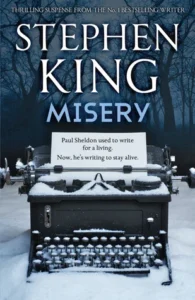by Antonio di Benedetto (1956)

2025 reads, 9/25:
“I’m afraid to draw up a tally of sins. I don’t want the past to be more powerful than the future.”
Zama is the first book of Antonio di Benedetto’s unofficial “trilogy of expectation.” This book is followed by The Silentiary (1964), then rounded out with The Suicides (1969), which is also the #nyrbbookclub pick for February 2025. I already got The Suicides in the mail (as we are now way past February) but wanted to take my time getting through this trilogy and really get to know di Benedetto.
I tried this as my “bedtime” Kindle book – but that wasn't a good idea. This is a work to be studied and fully entranced in, reminiscent of Jean-Paul Sartre's Nausea or literally anything by Clarice Lispector. Once I started reading this during the day, more alert and aware, I got much more into it.
Don Diego de Zama is the eponymous main character, whose thoughts we are with the entire novel. Over three preiods of his life (1790, 1794, and 1799), he is a servant under the Spanish occupation of Paraguay, as he moves from village to village, trying to find meaning and happiness in his everyday life. Zama is self-destructive, languid, detached, and disinterested in anything except for his yerba maté. He does not really care for others, and tries to advance his career without actually doing anything. To be honest, he is one of the most solipsistic characters I’ve ever come across.
“I thought through these actions but did not succeed in moving.”
Zama is also the king of misreading situations. In the first two parts, there would be many instances where something would happen, and then he will go on this internal tirade completely misreading everything and everyone in it. It gets a bit repetitive after a while, but is crucial to his character development, or lack thereof. In the final section, we actually see what happens when this lackadaisical attitude is put in front of characters who, in turn, could not care less about him.
One thing I've noticed that helps with reading these “stream of consciousness” novels (or any philosophical novel), is that it helps to read a little bit about the author. Sure, arguably the best way to get to know someone is to read their writing, and you might be able to convince me of that. But a little prereading can really go a long way in aligning yourself with the time period and circumstances in the author’s life that caused them to write this (both The Stranger and The Hour of the Star benefit heavily from reading a bit about Camus and Lispector, respectively). Di Benedetto is no different, and reading Esther Allen’s introduction about his life in Argentina, inspiration from Dostoevsky, and the state of Paraguay under Spanish rule, helped me ground myself in the work.
It’s a dense read, but a great introduction to the “trilogy of expectation” that I plan to continue. Zama’s expectations of the world around him are aggressively denied, but maybe there’s something to learn in his downfall. Ultimately, I am glad for the opportunity to be exposed to di Benedetto, an author I would have never found if it wasn’t for the #nyrb book club.
Something more is always expected.
My thinking mind had this thought, but when I dispensed with thinking I fell into a brute inertia, as if my share in things were running out, and the world would be left unpopulated because I would no longer exist within it.
#readingyear2025 #nyrb




